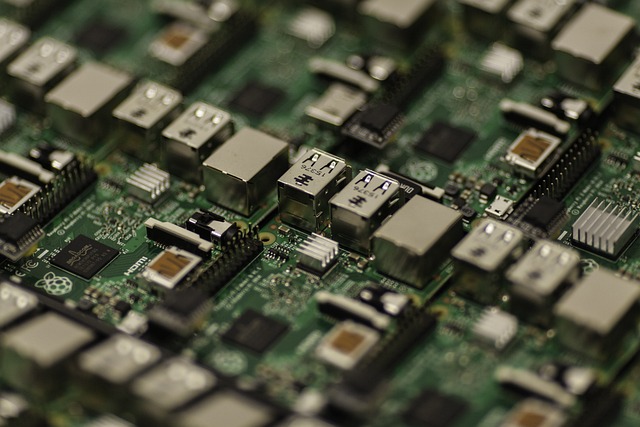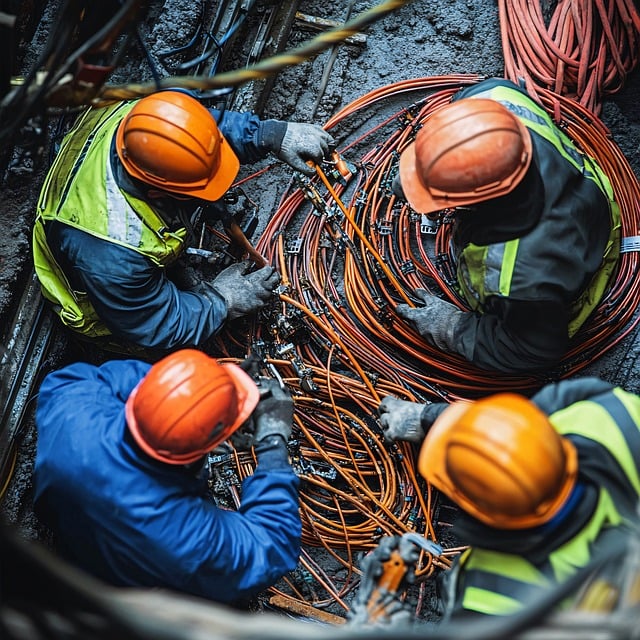The electrical panel, a critical component in modern homes, requires expert care. Issues like faulty wiring, outdated parts, or damaged switches can cause power problems, hazards, and even fires. Electricians diagnose these issues using specialized tools and techniques, offering solutions from minor repairs to complex rewiring. A systematic approach, beginning with safety precautions and component testing, ensures accurate problem-solving. Regular maintenance by a qualified electrician is vital for panel longevity, preventing costly repairs, and ensuring home electrical safety and efficiency.
“Uncover the secrets of electrical panels and empower yourself with knowledge! This comprehensive guide is designed for both professionals and DIY enthusiasts. From understanding the intricate functions of these vital components to mastering common issues, we delve into the art of diagnosis and resolution.
Learn about advanced tools and techniques for electricians, and discover step-by-step processes to tackle panel problems effectively. Moreover, explore preventive measures to ensure the longevity of your electrical panels, making you an expert in maintaining this crucial aspect of modern living.”
- Understanding Electrical Panels: Their Function and Common Issues
- Diagnosing Problems: Tools and Techniques for Electricians
- Resolving Electrical Panel Issues: Steps to Take
- Maintenance and Prevention: Ensuring Longevity of Electrical Panels
Understanding Electrical Panels: Their Function and Common Issues

Electricity is the lifeblood of modern living, and at the heart of every home or business lies a crucial component: the electrical panel. This centralized hub controls the flow of electricity throughout a structure, distributing power to various circuits and outlets. Understanding its function and common issues is vital when it comes to troubleshooting and resolving problems efficiently.
Electrical panels are designed to protect both the wiring system and the appliances connected to it. They use circuit breakers or fuses to interrupt the electrical current in case of overloads or short circuits, preventing fires or other hazards. However, these panels can encounter issues like faulty wiring, outdated components, loose connections, or damaged switches, leading to frequent tripping, power outages, or even arcing and sparking. Identifying these problems often requires the expertise of a qualified electrician who can diagnose and resolve them safely and effectively.
Diagnosing Problems: Tools and Techniques for Electricians

Diagnosing problems with electrical panels is a critical skill for any electrician. The initial step involves a thorough visual inspection to identify any signs of damage, corrosion, or loose connections. Specialized tools such as voltage testers, multimeters, and thermal imaging cameras are then employed to check for power discrepancies, faulty wiring, and potential overloads.
Electricians also rely on advanced techniques like load calculations, circuit tracing, and computer-aided design (CAD) software to pinpoint issues. By analyzing the electrical system’s performance and behavior, they can effectively diagnose problems ranging from minor repairs to complex rewiring scenarios. These methods ensure accurate identification of faults, allowing electricians to resolve issues efficiently and safely.
Resolving Electrical Panel Issues: Steps to Take

When facing electrical panel issues, taking a systematic approach can help resolve problems efficiently. Start by locating and identifying the problem—is it a tripped circuit breaker or a faulty outlet? Understanding the source is key. Next, disconnect the power at the main breaker to ensure safety while you work. Once safe, check for loose connections, damaged wiring, or outdated components. A qualified electrician can recommend upgrades or replacements if needed.
Follow up by testing each component and circuit to pinpoint any faulty areas. After identifying the issue, a professional electrician can provide expert solutions. They might replace defective parts, rewire problematic circuits, or offer advice on panel upgrades for better home electrical safety and efficiency.
Maintenance and Prevention: Ensuring Longevity of Electrical Panels

Regular maintenance is key to prolonging the life of your electrical panel and avoiding costly repairs or replacements. An electrician can perform routine inspections, testing components for wear and tear, checking connections for corrosion or damage, and ensuring all safety mechanisms are functioning correctly. Preventive measures such as these not only safeguard against electrical fires but also help maintain the overall efficiency of your home’s wiring system.
By keeping an eye on potential issues, electricians can often resolve problems before they escalate. This proactive approach includes cleaning corroded terminals, tightening loose connections, and replacing outdated components. Regular maintenance also involves checking for proper grounding and ensuring that circuit breakers are functioning as intended. These simple yet effective practices significantly contribute to the longevity of your electrical panel, offering peace of mind and potentially saving you from unexpected power outages or safety hazards.
Electrical panels are the backbone of any home or business’s electrical system, and proper maintenance is key. By understanding their function, recognizing common issues, and employing effective diagnosis and resolution techniques, electricians can ensure these vital components operate safely and efficiently. Regular maintenance and proactive prevention measures are essential to prolonging the lifespan of electrical panels and minimizing the risk of costly repairs or dangerous situations. Relying on the expertise of qualified electricians is indispensable in navigating the intricate world of electrical panel troubleshooting and upkeep.
